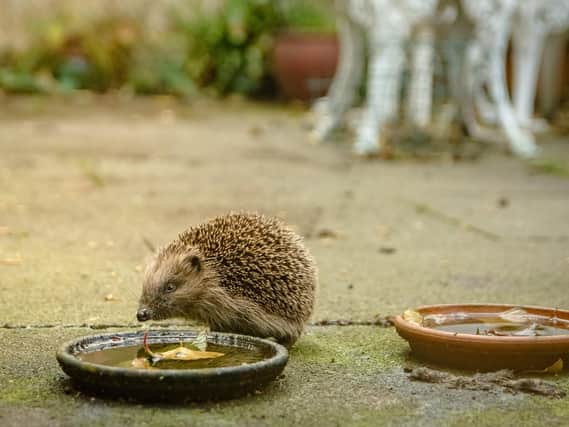We share our green spaces and if we don't think we make it harder for wildlife to survive - Sophie McCandlish


With the roads quieter and life slowing down, birds, flowers, insects and the wildlife around us are getting a little more of our attention.
It is also a reminder of how many other creatures we share our green spaces with and how, without realising it, we can make life harder for them and hinder their survival. Hedgehogs are one example.
Advertisement
Hide AdAdvertisement
Hide AdThis weekend is the end of Hedgehog Awareness Week and Emma Farley, who runs a hedgehog hospital, highlights the big decline in numbers of these once-common little creatures.
The way we live affects the way they live and Emma, along with charities such as the British Hedgehog Preservation Society and People’s Trust for Endangered Species, are campaigning to show how we can help hedgehogs survive.
And hedgehogs are not alone.
Amphibians such as the common toad and great crested newt have suffered from the removal of natural habitat.
There was a time when all three were common sights in gardens – under pots or sheds. But they are rarely found today.
Advertisement
Hide AdAdvertisement
Hide AdWith the removal of natural highways that hedgerows once provided, these charities are showing us how we can create
new ones.
Hedgehogs need to roam large areas to find food and water so creating a gap in fencing between gardens creates a ‘highway’ they can use freely.
Froglife, a charity that works for the conservation of amphibians, has just completed a four-kilometre wildlife ‘highway’ working with Sheffield Council.
This wildlife corridor has helped displaced newts, provided nesting areas for endangered birds and protection from the roads, which claim a great deal of wildlife. There are charities like Froglife and Emma’s Little Silver Hedgehog Hospital working to save species we have taken for granted.
Advertisement
Hide AdAdvertisement
Hide AdThey raise awareness through involvement, particularly with the next generation.
It was schoolchildren who planted the whip trees to complete the corridor. And by creating that sense of ownership, these species may once again become commonplace but not overlooked.